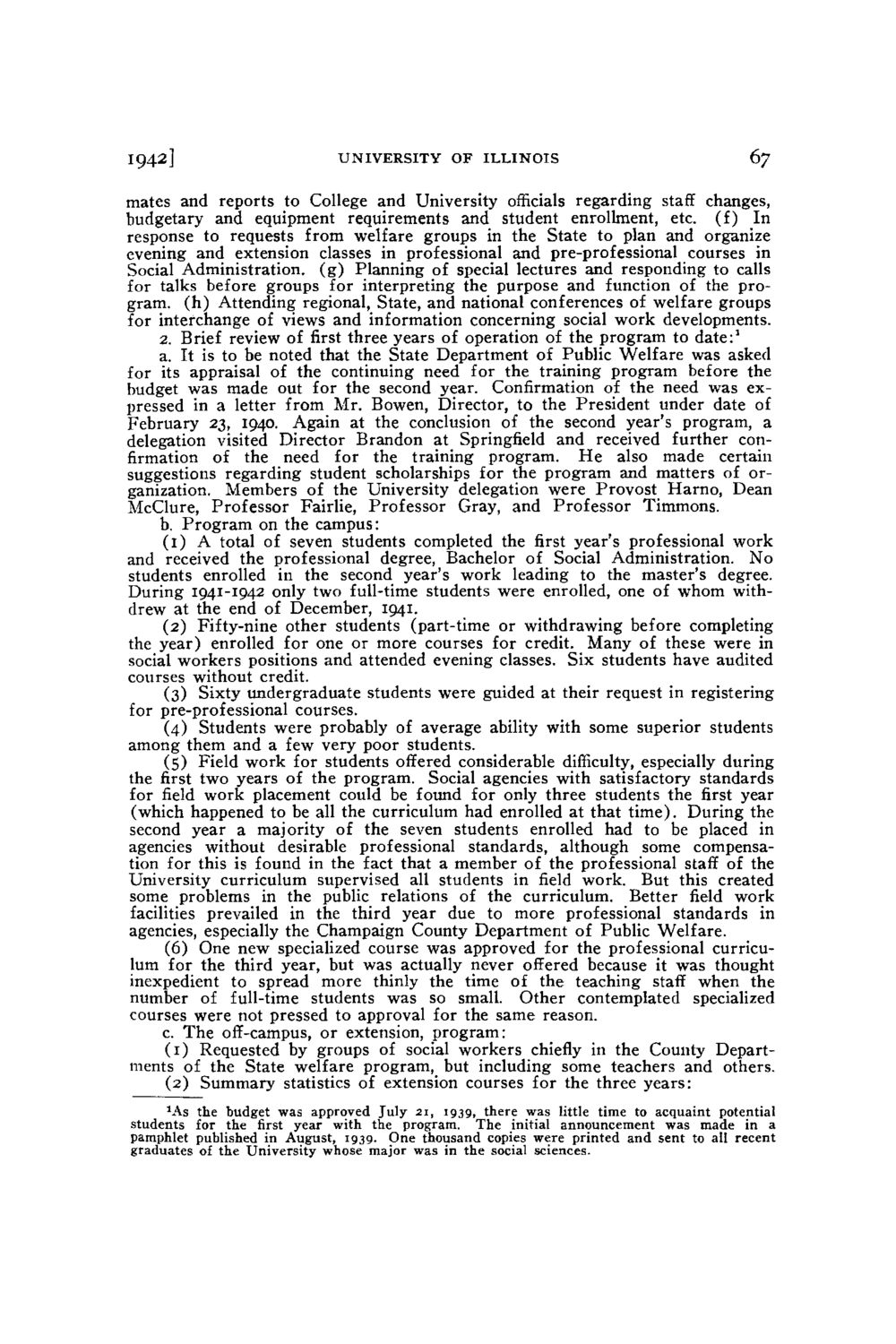| |
| |
Caption: Board of Trustees Minutes - 1944
This is a reduced-resolution page image for fast online browsing.

EXTRACTED TEXT FROM PAGE:
1942] UNIVERSITY OF ILLINOIS 67 mates and reports to College and University officials regarding staff changes, budgetary and equipment requirements and student enrollment, etc. (f) In response to requests from welfare groups in the State to plan and organize evening and extension classes in professional and pre-professional courses in Social Administration, (g) Planning of special lectures and responding to calls for talks before groups for interpreting the purpose and function of the program. ( h ) Attending regional, State, and national conferences of welfare groups for interchange of views and information concerning social work developments. 2. Brief review of first three years of operation of the program to date: 1 a. It is to be noted that the State Department of Public Welfare was asked for its appraisal of the continuing need for the training program before the budget was made out for the second year. Confirmation of the need was expressed in a letter from Mr. Bowen, Director, to the President under date of February 23, 1940. Again at the conclusion of the second year's program, a delegation visited Director Brandon at Springfield and received further confirmation of the need for the training program. H e also made certain suggestions regarding student scholarships for the program and matters of organization. Members of the University delegation were Provost Harno, Dean McClure, Professor Fairlie, Professor Gray, and Professor Timmons. b. P r o g r a m on the campus: (1) A total of seven students completed the first year's professional work and received the professional degree, Bachelor of Social Administration. No students enrolled in the second year's work leading to the master's degree. During 1941-1942 only two full-time students were enrolled, one of whom withdrew at the end of December, 1941. (2) Fifty-nine other students (part-time or withdrawing before completing the year) enrolled for one or more courses for credit. Many of these were in social workers positions and attended evening classes. Six students have audited courses without credit. (3) Sixty undergraduate students were guided at their request in registering for pre-professional courses. (4) Students were probably of average ability with some superior students among them and a few very poor students. (5) Field work for students offered considerable difficulty, especially during the first two years of the program. Social agencies with satisfactory standards for field work placement could be found for only three students the first year (which happened to be all the curriculum had enrolled at that t i m e ) . During the second year a majority of the seven students enrolled had to be placed in agencies without desirable professional standards, although some compensation for this is found in the fact that a member of the professional staff of the University curriculum supervised all students in field work. But this created some problems in the public relations of the curriculum. Better field work facilities prevailed in the third year due to more professional standards in agencies, especially the Champaign County Department of Public Welfare. (6) One new specialized course was approved for the professional curriculum for the third year, but was actually never offered because it was thought inexpedient to spread more thinly the time of the teaching staff when the number of full-time students was so small. Other contemplated specialized courses were not pressed to approval for the same reason. c. T h e off-campus, or extension, program: (1) Requested by groups of social workers chiefly in the County Departments of the State welfare program, but including some teachers and others. (2) Summary statistics of extension courses for the three years: *As the budget was approved July 21, 1939, there was little time to acquaint potential students for the first year with the program. The initial announcement was made in a pamphlet published in August, 1939. One thousand copies were printed and sent to all recent graduates of the University whose major was in the social sciences.
| |